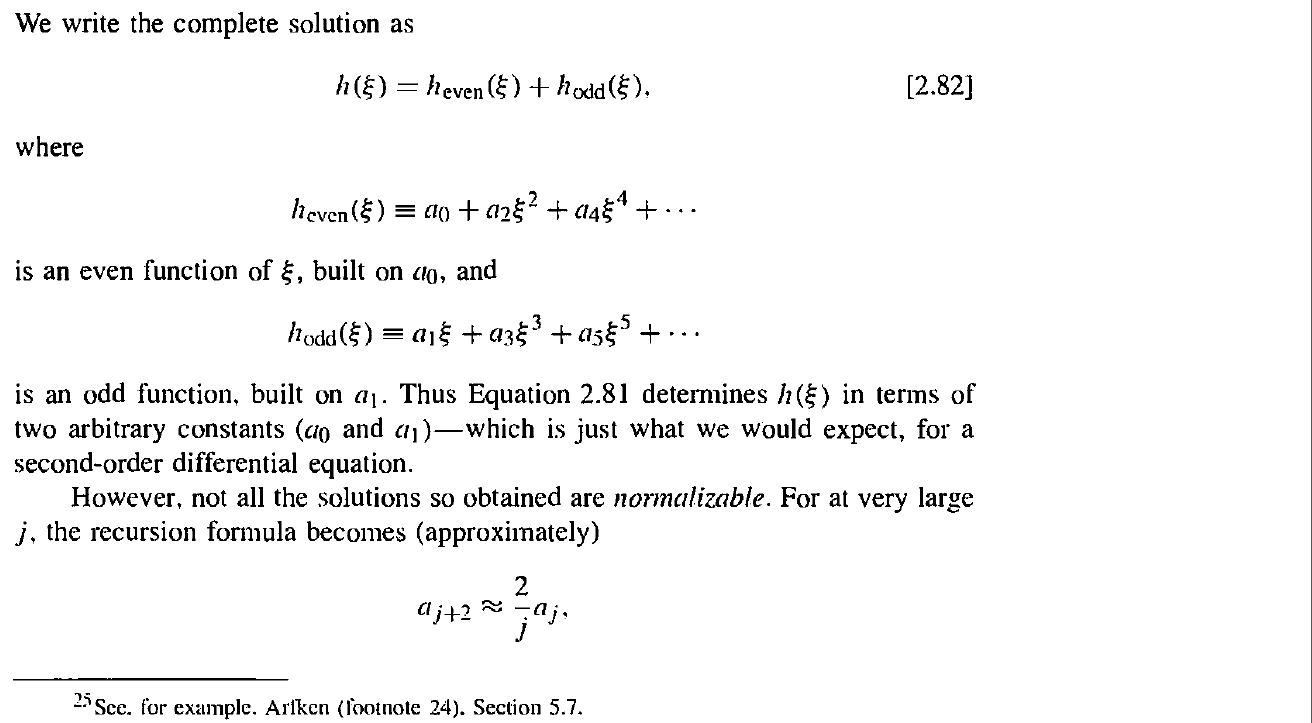In GriffithGriffiths' book page 53, when we derive the solution of the quantum harmonic oscillator by using the power series way, we have: $a_{j+2} = \frac{2j+1-K}{(j+1)(j+2)}\, a_{j} $.$$a_{j+2} = \frac{2j+1-K}{(j+1)(j+2)}\, a_{j} .$$ And for large $j$, we have: $a_{j+2}\approx\frac{2}{j}\,a_j$.$$a_{j+2}\approx\frac{2}{j}\,a_j.$$ Up to this point I totally agree (Youone just dotakes the limit).
However, the subsequent derivation of solution $a_{j}$ and $h(\xi)$ I attached from the GriffithGriffiths' textbook are very confusing. How did it go from $a_{j+2}\approx\frac{2}{j}a_j$ to the solution of $a_{j}$? Also, how do the second and third approximation work in $h(\xi)$?
- How did it go from $a_{j+2}\approx\frac{2}{j}a_j$ to the solution of $a_{j}$?
- Also, how do the second and third approximations work in $h(\xi)$?
My questions are mainly mathematical. And I very much hope someone can provide me derivationsa derivation or give merefer a link to themwhere these questions may already be answered.


